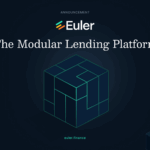AArch Protocol (ARCH)
Functionality: A decentralized, interoperable blockchain designed to bridge isolated DeFi ecosystems.
Why Rising: Addresses the need for seamless cross-chain transactions, enhancing liquidity and efficiency in DeFi.
Standout Feature: Solves the interoperability issue, allowing assets to move freely between different blockchains.
BrightID (BRT)
Functionality: Provides identity verification on the blockchain to prevent Sybil attacks in DeFi platforms.
Why Rising: Enhances security by verifying identities, crucial for trust in DeFi applications.
Standout Feature: Combines blockchain technology with identity verification to ensure secure transactions.
Kumo Finance (KLIMA)
Functionality: Integrates yield farming with staking, focusing on climate change initiatives.
Why Rising: Aligns financial incentives with environmental sustainability, appealing to eco-conscious investors.
Standout Feature: Channels funds into green projects, offering a sustainable investment avenue in DeFi.
Orca DAO (OCEAN)
Functionality: Uses AI and NFTs for data analytics, optimizing decisions in decentralized finance.
Why Rising: Leverages AI and NFTs to enhance decision-making and governance in DeFi.
Standout Feature: Combines advanced technology with DeFi to drive innovation and efficiency.
Mirror Protocol (MPL)
Functionality: Enables the creation of synthetic assets, representing real-world assets in DeFi.
Why Rising: Opens new investment avenues by tokenizing traditional assets like real estate and art.
Standout Feature: Bridges the gap between traditional finance and DeFi through synthetic assets.
TrueFi (TRU)
Functionality: An open-source credit protocol for uncollateralized lending, assessing creditworthiness without collateral.
Why Rising: Promotes financial inclusivity by making lending accessible to those without significant assets.
Standout Feature: Reduces barriers to entry in DeFi lending by focusing on creditworthiness rather than collateral.
Gitcoin (GTC)
Functionality: Integrates DeFi and NFTs, offering staking options for yield generation.
Why Rising: Expands its ecosystem to include financial products, leveraging its community-driven approach.
Standout Feature: Combines NFTs with DeFi to create new revenue streams and governance models.
Hologram (HGRAM)
Functionality: A cross-chain NFT platform enabling dynamic use cases across blockchains.
Why Rising: Facilitates interoperability of NFTs, expanding their use in gaming and art.
Standout Feature: Enables flexible digital ownership and transferability across different platforms.
Flux Protocol (FLX)
Functionality: Focuses on scalability for DeFi apps, offering high transaction speed and low fees.
Why Rising: Solves scalability challenges in blockchain, making DeFi more accessible and efficient.
Standout Feature: Optimizes blockchain performance for DeFi applications, ensuring low costs and fast transactions.
Mina Protocol (MINA)
Functionality: A privacy-focused blockchain for private transactions and DeFi.
Why Rising: Addresses the growing concern for financial privacy in decentralized systems.
Standout Feature: Ensures private transactions by default, enhancing user privacy in DeFi.
Conclusion
These tokens represent a diverse array of innovations addressing various challenges and opportunities in the blockchain and DeFi space. From enhancing interoperability and security to promoting sustainability and scalability, each token brings unique solutions to the table. As we look towards 2025, these tokens are poised to play significant roles in shaping the future of cryptocurrency and decentralized finance. While the journey ahead is uncertain, their potential contributions highlight the dynamic and evolving nature of the crypto industry.


